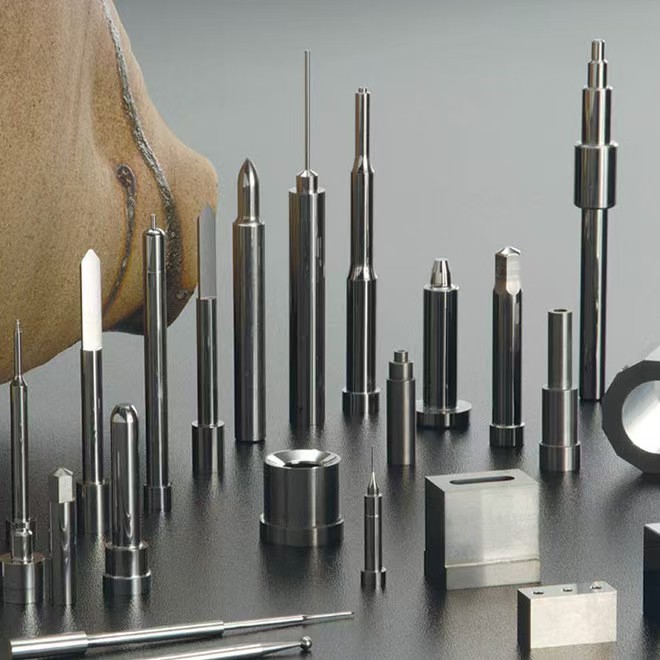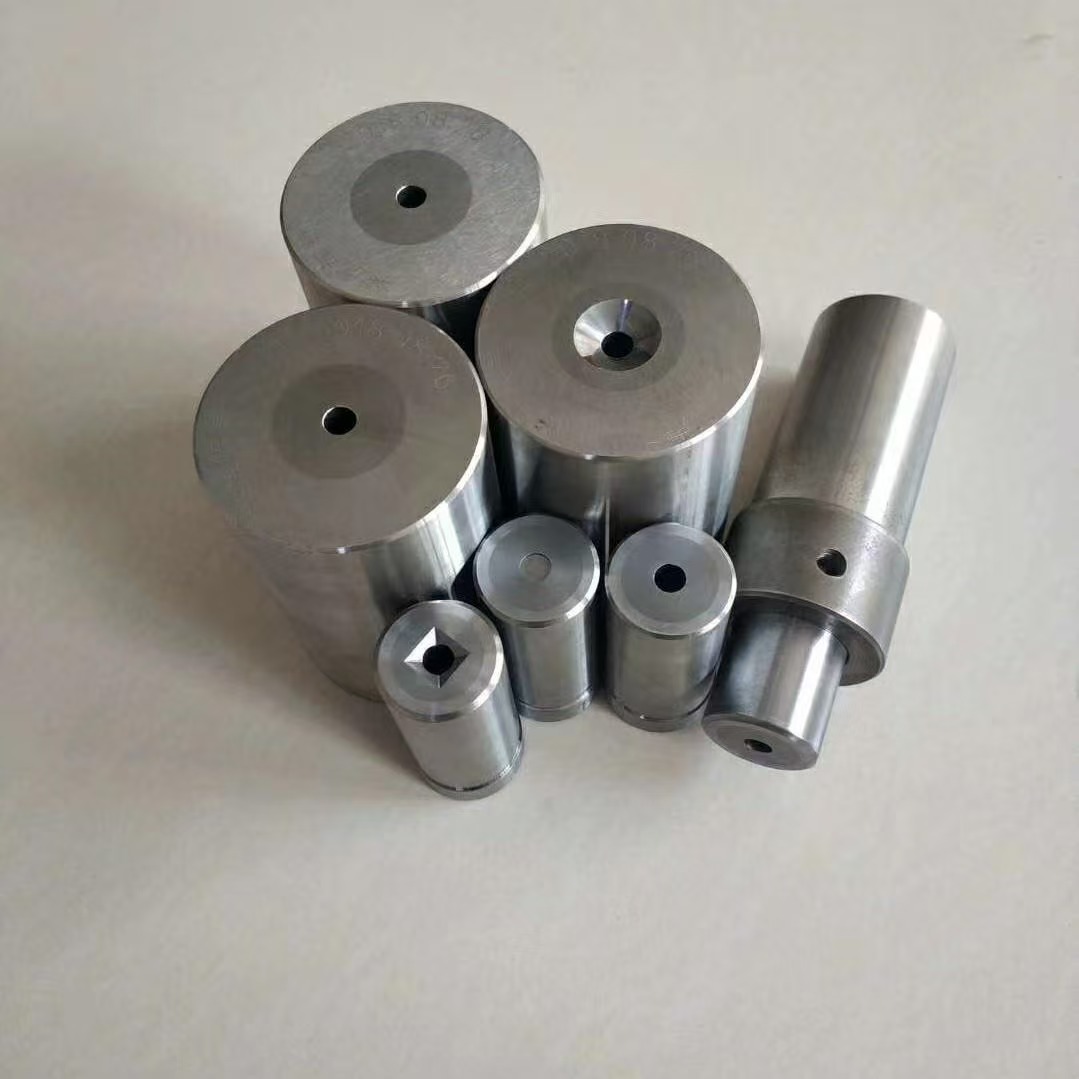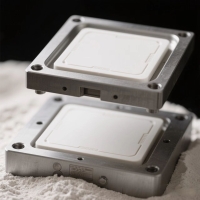Các phần tiêu chuẩn của khuôn
Các phần tiêu chuẩn của khuôn
1 khung khuôn
Các tổ hợp cơ sở khuôn tiêu chuẩn được đúc sẵn hoặc các thành phần cung cấp sự thuận tiện tuyệt vời cho các nhà sản xuất nấm mốc. Một cơ sở khuôn tiêu chuẩn bao gồm một nửa khuôn dưới và một nửa khuôn trên được trang bị các chân hướng dẫn.
Trong những ngày đầu, sự kết hợp mẫu chỉ bao gồm các chân hướng dẫn của tấm phóng và các chân hướng dẫn bên của khuôn cố định. Ngày nay, các cơ sở nấm mốc hoàn chỉnh có thể được mua.
Nhà sản xuất khuônBây giờ có thể tập trung vào việc sản xuất các thành phần nấm mốc, chẳng hạn như sâu răng. Các bộ phận tiêu chuẩn đã giảm đáng kể phạm vi xử lý độ sâu và thời gian xử lý trong sản xuất nấm mốc.
Ngày nay, các khung trang trọng tiêu chuẩn có các kích cỡ khác nhau có sẵn để mua, với kích thước lên tới 796mmx996mm và độ dày của công trình trang trọng thay đổi từ 10 đến 196 mm. Chất lượng thép cũng có thể được chọn.
Tất cả các bề mặt của mỗi mẫu là mặt đất, với sự song song bề mặt đạt 0,008/100mm và dung sai độ dày dao động từ +0,05 đến 0,25mm. Với cấu hình như vậy, các nhà sản xuất khuôn không cần phải xử lý lại các mẫu. Các mẫu có kích thước khác nhau đều được trang bị các thành phần hướng dẫn cần thiết, chẳng hạn như bài hướng dẫn, tay áo hướng dẫn và tay áo.
Một loạt các loạt bài nóng và vòi phun nóng, bao gồm các mạch điều khiển nhiệt độ và tan chảy, đã làm phong phú thêm sự đa dạng của các bộ phận tiêu chuẩn.

Khuôn đúc Ô Tô Công ty TNHH khuôn đúc jiefeng thái Châu (jfmoulds.com)
2. Các thành phần hướng dẫn khuôn
Để ngăn chặn các phần chèn và lõi bên trong khuôn bị hỏng trong quá trình đóng khuôn, các thành phần hướng dẫn khuôn cần được sử dụng. Đối với khuôn nhỏ và nhẹ, ghim hướng dẫn và tay áo hướng dẫn thường được sử dụng.
Tất cả các thành phần hướng dẫn của khuôn cần phải được làm cứng. Một khi chúng được mặc, chúng có thể được thay thế. Để ngăn các bộ phận nhựa bị ô nhiễm bởi dầu mỡ, các thành phần hướng dẫn thường hoạt động mà không cần bôi trơn dầu. Các nhà sản xuất các bộ phận tiêu chuẩn có thể cung cấp tay áo hướng dẫn tự bôi trơn và không cần bảo trì, do đó loại bỏ sự cần thiết của dầu hoặc dầu mỡ. Các thành phần hướng dẫn có thể được sử dụng trong các điều kiện trong đó nhiệt độ khuôn có thể đạt tới 200 ° C.
Tùy thuộc vào các yêu cầu sử dụng khác nhau, các đơn vị định vị trung tâm tròn hoặc vuông có thể được sử dụng. Thành phần định vị trung tâm đặc biệt có thể loại bỏ lực không cân bằng trên thành phần hướng dẫn trong quá trình đóng khuôn và đạt được sự phù hợp chặt chẽ về độ chính xác cao.
Đối với khuôn trung bình và kích thước lớn, nên cung cấp hỗ trợ cho các khuôn thông qua các máy ép phun. Với các khối hỗ trợ, khuôn có thể được hỗ trợ bởi cột màu xanh lá cây của máy ép phun hoặc trượt dọc theo đường ray hướng dẫn của mẫu máy.
3 thành phần hủy bỏ
Các thành phần hủy bỏ bao gồm các chân đẩy, lõi kính thiên văn, thanh trượt, các khối kẹp và các dạng khóa cạnh khác nhau.
Chân phun nên được chọn với đường kính lớn hơn và có khả năng cung cấp lực giảm đủ cho sản phẩm. Lực đẩy của pin đẩy phải lớn hơn độ bám dính giữa sản phẩm và khoang. Nếu độ bám dính quá lớn, biến dạng hoặc thiệt hại của phần đúc phun thường xảy ra trong quá trình giảm. Vị trí mà các chân đẩy được sắp xếp nên tránh lực giảm chỉ tác dụng lên chu vi của phần đúc.
Lõi kính viễn vọng
Đối với các bộ phận hủy bỏ với sự lộn ngược bên trong hoặc chủ đề bên trong, nên sử dụng các lõi kính thiên văn. Các lõi này đã được cứng lại và ngoại trừ các phần có ren cần được xử lý, các phần khác có thể được cài đặt bất cứ lúc nào.
Thanh trượt, giữ chặt khối lắp ráp
Việc mất đảo ngược bên ngoài thường dựa vào các thành phần di chuyển ngang, bao gồm các thanh trượt, khối kẹp và kéo lõi xi lanh.
Trong khuôn với nhiều bề mặt chia tay, cần có khóa cạnh để mở các bề mặt chia tay thứ cấp.
4 Phụ kiện làm mát khuôn
Để đạt được làm mát khuôn hiệu quả, một số phụ kiện tiêu chuẩn có liên quan có thể được sử dụng. Chẳng hạn như nước nhanh, khớp ống dầu, lõi dẫn nhiệt, các yếu tố phân tán và lõi ren.
Đầu nối nhanh
Standard parts manufacturers can provide a complete range of water/oil quick couplings. The most commonly used diameters are 9mm, 13mm and 19mm. The diameter of the fine and small core can even reach 5mm.
Quick couplings can be equipped with control valves or not. The characteristic of a valveless system is that the pressure drop in the cooling water channel is very small, while in a valveless system, the cooling medium will not be lost when the joint is loosened, and it can prevent corrosion caused by oxygen infiltration.
Threaded core
The threaded core is precisely fitted into the inner hole of the core, allowing the cooling medium to flow smoothly along the inner wall and ensuring good heat transfer. There are two types of threaded cores: single-ended and double-ended. In a single-ended threaded core, the cooling medium is introduced through a hole in the core and then flows back along the threaded ring. And the double-ended threaded core is composed of.
The cooling medium is introduced through the first helical channel and discharged through the second helical channel.

Khuôn đúc hàng hóa Công ty TNHH khuôn đúc jiefeng (jfmoulds.com)
5. Quick mold changing system
The quick mold changing system not only enables rapid clamping of molds but also enables quick connection of all necessary equipment.
When changing molds, the time required for mold clamping is actually very short. The most time-consuming parts are the coupling of the machine's ejection mechanism, the connection of the cooling water circuit, the connection of the limit switch and the mold heating system, as well as the connection between the hydraulic core-pulling and the machine. And all these elements are indispensable parts of an excellent mold changing system.
Only 0.5% of injection molding companies can find fully automatic solutions. The cost of semi-automated mold changing is also relatively low. Many semi-automated components are provided by standard parts suppliers.
The steps of semi-automated mold changing include:
(1) Use mechanical, hydraulic clamping components or magnetic locking templates.
(2) Quick couplings using cooling water and hydraulic oil.
(3) Quick couplings for the ejection system.
(4) System plug-in device for hot runner and limit switch.
The following practices have been proven effective:
(1) The connection of the cooling medium is accomplished by the water collection block fixed on the machine template.
(2) The connection points of the cooling water pipes should be marked with colors for inflow and outflow.
(3) The junction box should be installed on the mold to avoid incorrect connection.
6-side lock mechanism
The edge lock mechanism realizes the mechanical movement of the template during the mold opening action.
Providing additional travel for the template or fixing the position for removing the template is a task that the edge lock mechanism needs to complete. When opening the mold, the side lock can open an additional parting surface. During the mold opening movement, the side lock pulls the demolding back through the mechanical inclined wedge until the demolding stops moving, while the mold will continue to move. The side lock does not require any electrical components for control and is locked entirely by mechanical structure. Edge locks are very commonly used, and standard parts suppliers can provide various types of products.
Heating plates for thermosetting plastics and elastomers
In the processing of thermosetting plastics or elastomers, injection molding machines are often equipped with heating plates. The advantage is that the mold temperature can be raised without installing heating components on each set of molds.
The heating plate is usually installed on the fixed template or ejection plate of the injection molding machine, and it is equipped with heating elements and sensors for temperature control. Heating plates equipped with heating sleeves or heating coils can be set to different temperatures to meet the heating requirements of various molds.
The thermal output power of the heating plate is 5000 to 7000 watts. But they are not omnipotent and are only suitable for simple and flat products. For products with a large height difference, due to the excessive temperature difference inside the mold, the heating plate is not very suitable. In this case, it is best for the mold to be equipped with an independent heating device.
If the positions of the heating elements and temperature sensors are arranged reasonably, the temperature on the mold surface can be effectively controlled. The temperature difference on all surfaces of the mold should be within ± 5℃. In this way, the hardness of the injection molded parts is uniform, and at the same time, the occurrence of internal stress and warpage can be prevented.
8. Demolding brush for elastomers
Most elastomer products are soft but unstable. They cannot be ejected with normal ejection components. These products must be removed by hand with a brush or by a mechanical hand system.
The brush removal unit drives the rotating brush to brush over the mold surface, and the product is brushed out of the cavity as the brush rolls in the reverse direction. This kind of institution is a variant of the pushout institution. With this brush, the flash, injection system and runner of the product are simultaneously brushed out of the mold cavity. Brushes are also frequently used to ensure that there is no product or runner residue.
Residue remains on the ejection side or injection molding side.
Brushes are usually made of natural bristles such as fur or rubber strips and need to withstand a temperature of 250℃. Not all materials are suitable.
The diameter of the brush can be changed by replacing the brush head. This brushing unit can also be adjusted to perform strong brushing or gentle brushing.
To ensure 100% cleanliness of the mold, an image monitoring system can be used. This system can detect whether the gate or product is stuck, thereby initiating the second or third cleaning.
Thông tin liên quan
Thiết kế khuôn đặc biệt
2025-07-24
Thiết kế khuôn đặc biệt1 Mold Stackthe Stacked Fold sản xuất đồng thời sản xuất ...
Khám phá khuôn phun: Nền tảng chính xác của sản xuất công nghiệp
2025-07-11
Khám phá khuôn phun: Nền tảng chính xác của sản xuất công nghiệp...
Các loại khuôn hai tấm bị hủy bỏ
2025-07-22
Các loại loại mốc hai tấm1.1 Các bộ phận được đúc không có quá nhiều ...
"Bậc Thầy tạo hình" ẩn giấu trong những nhu yếu phẩm hàng ngày
2025-07-17
"Bậc Thầy tạo hình" ẩn giấu trong các nhu yếu phẩm hàng ngày trong sản phẩm công nghiệp ngày nay...
Từ đột phá công nghệ đến chuyển đổi thông minh
2025-07-07
Từ những đột phá công nghệ đến chuyển đổi thông minh...
Khuôn ép phun: nền tảng của Sản xuất chính xác và xu hướng mới trong phát triển công nghiệp
2025-07-08
Khuôn ép phun: nền tảng của Sản xuất chính xác và xu hướng mới ở...





